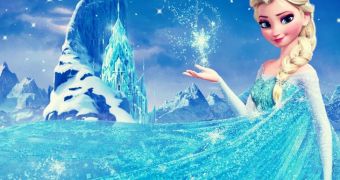For some reason, the scientific community appears to have taken a sudden interest in discussing movies and debating whether or not the things happening in them are in accordance with the laws of nature.
A recent paper published in the Journal of Interdisciplinary Science Topics and authored by specialist Aaron Goldberg with the McMaster University in Canada takes on Disney's award-winning film “Frozen.”
As detailed by Phys Org, this paper aims to determine exactly how much power Snow Queen Elsa must have possessed in order to be able to accidentally freeze the Kingdom of Arendelle when in emotional turmoil.
In his paper, researcher Aaron Goldberg explains that, before venturing to make observations concerning Elsa's powers, he attempted to determine the overall mass of the ice that ended up covering Arendelle following Elsa's fit.
Based on data concerning the geography of Norwegian fjord Nærøyfjord, which served as an inspiration for Arendelle, the specialist concluded that, when freezing her home, Elsa created 99,043,217,000 kilograms (218,352,916,740 pounds) of ice.
The McMaster University researcher calculates that, using a Carnot refrigerator, one would require an impressive 5,800,000,000,000,000 Joules worth of power to recreate Snow Queen Elsa's little stunt, as described in Disney's “Frozen.”
“It is well known that the most efficient heat engine is a Carnot engine, which harnesses the temperature difference between two reservoirs to do work. This can be done in reverse, harnessing work to drive a temperature difference between two reservoirs, and is known as a Carnot refrigerator.”
“In this case, the latter two reservoirs are ice as -15 degrees Celsius (5 degrees Fahrenheit), and the air at 20 degrees Celsius (68 degrees Fahrenheit). To accomplish Elsa's feat, a Carnot refrigerator would require 5,800,000,000,000,000 Joules of energy,” the specialist writes.
Is is estimated that this much energy is the equivalent of 115 times the one released by the Hiroshima nuclear bomb, and 63 times greater than the output of the bomb that hit Nagasaki. Hence, Aaron Goldberg cannot help but conclude that Disney's “Frozen” and science do not really see eye to eye.
As the specialist explains in his paper in the Journal of Interdisciplinary Science Topics, “This immense number puts Elsa's power into perspective, implying either that the Snow Queen has enormous strength, or that Disney underestimated the ramifications of their animated fantasy.”
The news about this study comes shortly after a group of student's announced to the world that, according to their calculations, Superman's solar-powered flight, as described in DC Comics, is a clear violation of the law of conservation of energy.

 14 DAY TRIAL //
14 DAY TRIAL //